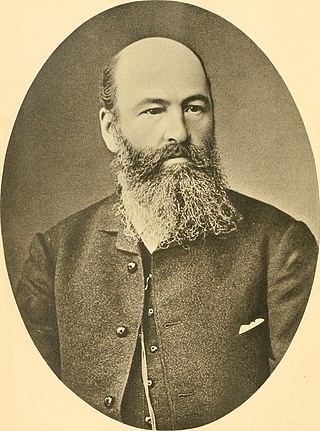
Nikolay Grigoryevich Erschoff, also Nikolaj Grigor'jevitsch Erschov, Erschow or Yershov was a Russian entomologist mainly interested in Lepidoptera.

Brachmia is a genus of the twirler moth family (Gelechiidae). Among these, it is mostly placed in the subfamily Dichomeridinae.
Eudiaphora is a monotypic genus of tiger moths in the family Erebidae erected by Vladimir Viktorovitch Dubatolov in 1990. Its only species, Eudiaphora turensis, was first described by Nikolay Grigoryevich Erschoff in 1874. It is found in the mountains and deserts of Turkmenistan, Kazakhstan, Kyrgyzstan, Uzbekistan, Tajikistan, Afghanistan, western Mongolia, and China (Xinjiang).

Cupido is a genus of butterflies in the family Lycaenidae. The subgenus Everes is included here.
Anumeta is a genus of moths in the family Erebidae.
Tarachephia is a monotypic moth genus of the family Noctuidae erected by George Hampson in 1926. Its only species, Tarachephia hueberi, was first described by Nikolay Grigoryevich Erschoff in 1874. It is found in Turkestan. It is found in Syria, Iraq, Iran, the Transcaspian Region, Uzbekistan, Turkmenistan, Afghanistan and Israel.

Apocheima is a genus of moths in the family Geometridae erected by Jacob Hübner in 1825, also known as Phigalia.

Aspitates is a genus of moths in the family Geometridae, native to Eurasia and North America.

Lithostege is a genus of moths in the family Geometridae erected by Jacob Hübner in 1825.
Anumeta spilota is a moth of the family Erebidae first described by Nikolay Grigoryevich Erschoff in 1874. It is found from the western parts of the Sahara to the Sinai, Israel, central Asia, Pakistan and India.

Myelois is a genus of small moths belonging to the family Pyralidae. They are found in western Eurasia and adjacent regions such as the Maghreb.

Pempelia is a genus of moths of the family Pyralidae described by Jacob Hübner in 1825.
Digitivalva exsuccella is a moth of the family Acrolepiidae. It was described by Nikolay Grigoryevich Erschoff in 1874. It was described from Uzbekistan.
Nebrarctia guttata is a moth of the family Erebidae. It was described by Nikolay Grigoryevich Erschoff in 1874. It is found in western Tien Shan, Hissar and eastern Afghanistan.
Deuterotinea is a genus of moths in the Eriocottidae family.
Deuterotinea macropodella is a moth in the Eriocottidae family. It was described by Nikolay Grigoryevich Erschoff in 1874. It is found in Turkmenistan.
Syncopacma biareatella is a moth of the family Gelechiidae. It was described by Nikolay Grigoryevich Erschoff in 1874. It is found in Kyzylkum Desert in Central Asia.
Depressaria despoliatella is a moth in the family Depressariidae. It was described by Nikolay Grigoryevich Erschoff in 1874. It is found in Turkmenistan.
Scythris capitalis is a moth of the family Scythrididae. It was described by Nikolay Grigoryevich Erschoff in 1874. It is found in Afghanistan, Kazakhstan, Kyrgyzstan, Turkey, Turkmenistan, Tajikistan and Uzbekistan.







